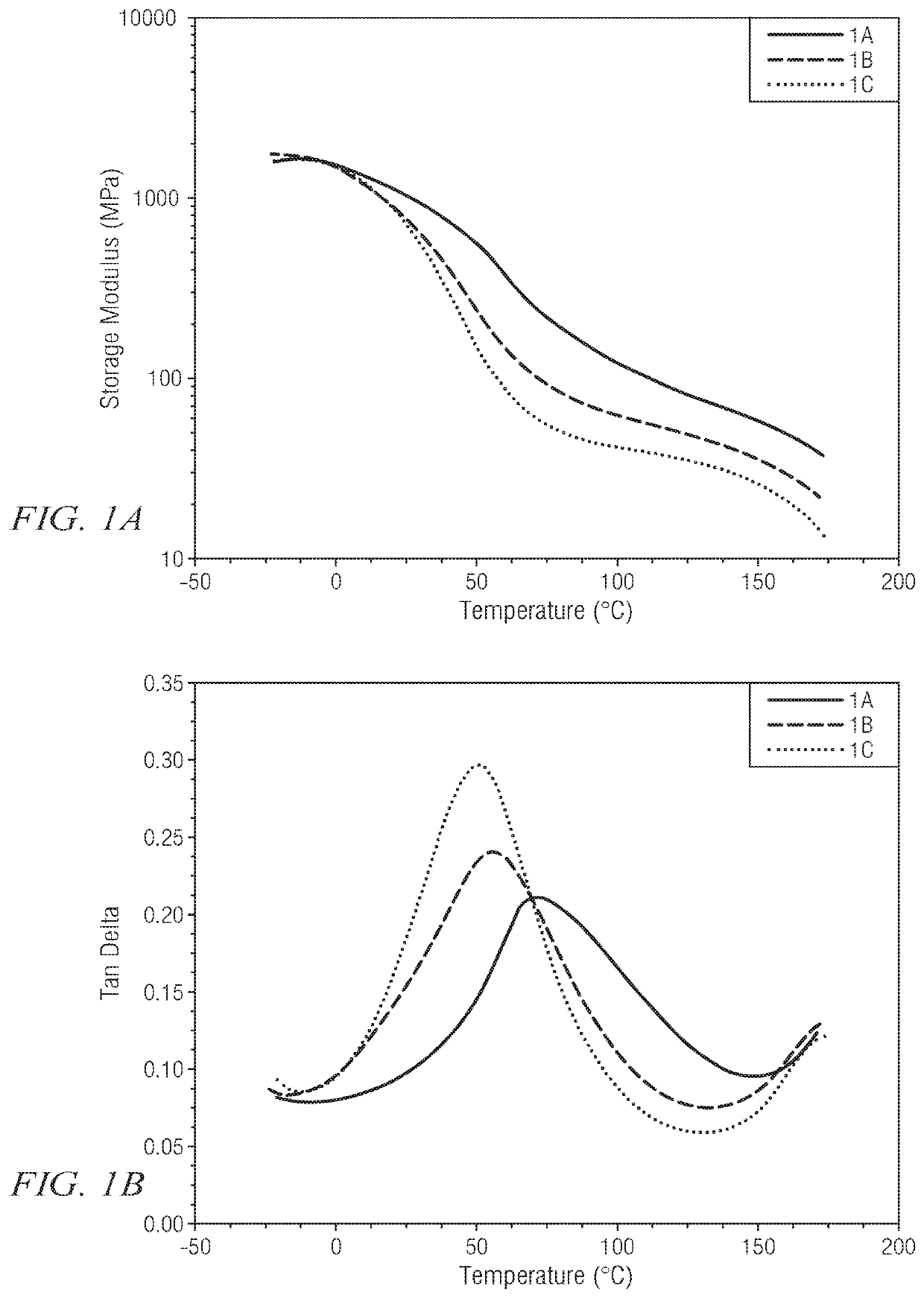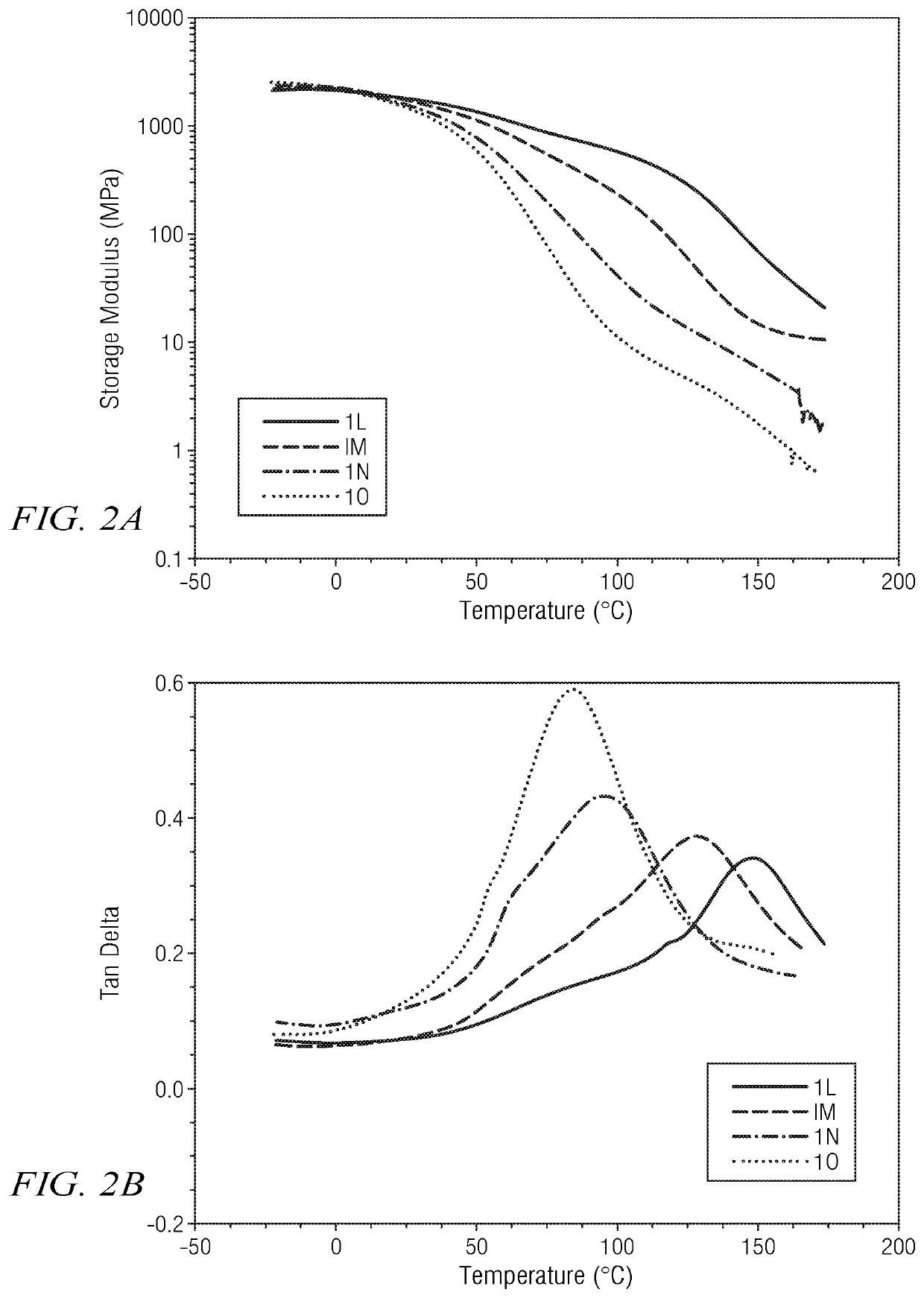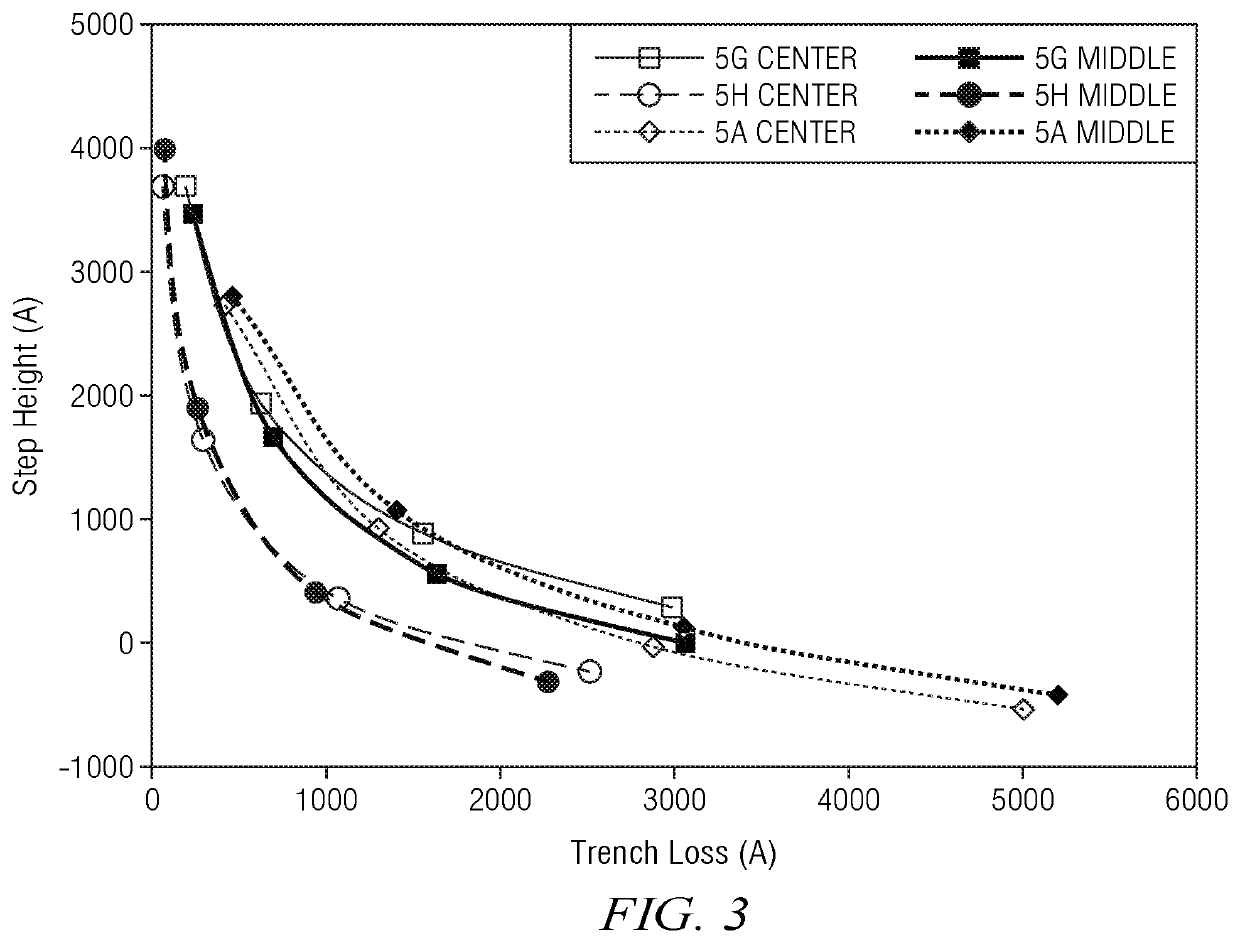Polishing pad employing polyamine and cyclohexanedimethanol curatives
a polyamine and curative technology, applied in the field of polishing pads, can solve the problems of high removal rate and long pad life, and achieve the effects of low defectivity, high removal rate, and good planarization efficiency
- Summary
- Abstract
- Description
- Claims
- Application Information
AI Technical Summary
Benefits of technology
Problems solved by technology
Method used
Image
Examples
example 1
[0077]A number of non-porous polishing pad coupons were prepared for evaluating the effect of CHDM on mechanical properties (as described in more detail below in Examples 2-4). The coupons were prepared by mixing prepolymer, diamine curative, and an optional diol curative. The mixture was poured on a nine-inch square preheated mold base where it was compression molded at 260 degrees F. for 10 min. The pre-cured pad coupons were then released from the mold and cured in a vented oven for 12 hours at a temperature of 200 degrees F. The coupons were then cut into samples for mechanical testing.
[0078]Table 1A lists 11 experimental pad coupons 1A, 1B, 1C, 1D, 1E, 1F, 1G, 1H, 1J, and 1K that included various prepolymer / diamine curative / diol compositions. Each of the compositions in Table 1A included Imuthane® PET-75D prepolymer and dimethylthiotoluenediamine curative. The compositions are listed as part by weight with each composition normalized to 100 parts by weight prepolymer. For examp...
example 2
[0082]The Shore D hardness and the density of each of the pad coupons disclosed in Example 1 were measured in this example. The Shore D hardness was measured at 25 degrees C. using a standard durometer hardness test according to the procedure set forth in ASTM 2240 and ISO 868. The density was measured using a Mettler Toledo Pycnometer model AG285 or XS205. The samples were cut into 1-inch diameter circles. The samples displaced isopropyl alcohol in a wet pycnometer and the apparent density was determined by the gravimetric method. Tables 2A, 2B, and 2C list the Shore D hardness values and the density values for each of the pad coupons listed above in Tables 1A, 1B, and 1C.
TABLE 2ACouponHardness (Shore D)Apparent Density (grams / cm3)1A751.171B721.171C661.161D731.171E691.161F721.171G681.161H731.171I691.161J711.171K681.16
TABLE 2BCouponHardness (Shore D)Apparent Density (grams / cm3)1L781.211M761.201N761.201O751.19
TABLE 2CCouponHardness (Shore D)Apparent Density (grams / cm3)1P761.181Q751.1...
example 3
[0084]The elastic storage modulus (E′) was measured as a function of temperature using dynamic mechanical analysis (DMA) for each of the pad coupons disclosed in Example 1. Cured pad coupon samples were cut into 6 mm by 30 mm rectangular specimens and mounted in a tensile clamp. The physical dimensions of each sample were measured using a micrometer prior to the above described DMA testing. The measured dimensions were input into the DMA software prior to mounting the sample in the test chamber. The DMA measurements were made using a Q800 DMA measurement tool available from TA Instruments. DMA measurements were made in accordance with ASTM D4065. Briefly, the DMA tests were conducted using a standard multi-frequency controlled strain tensile mode, with a frequency of 1 Hz, an amplitude of 30 microns, and a temperature ramp rate of 5 degrees C. per minute from −50 to 180 degrees C. under dry condition with air flow.
[0085]Those of ordinary skill will readily recognize that there are n...
PUM
| Property | Measurement | Unit |
|---|---|---|
| storage modulus | aaaaa | aaaaa |
| tensile toughness | aaaaa | aaaaa |
| storage modulus | aaaaa | aaaaa |
Abstract
Description
Claims
Application Information
 Login to View More
Login to View More - R&D
- Intellectual Property
- Life Sciences
- Materials
- Tech Scout
- Unparalleled Data Quality
- Higher Quality Content
- 60% Fewer Hallucinations
Browse by: Latest US Patents, China's latest patents, Technical Efficacy Thesaurus, Application Domain, Technology Topic, Popular Technical Reports.
© 2025 PatSnap. All rights reserved.Legal|Privacy policy|Modern Slavery Act Transparency Statement|Sitemap|About US| Contact US: help@patsnap.com



